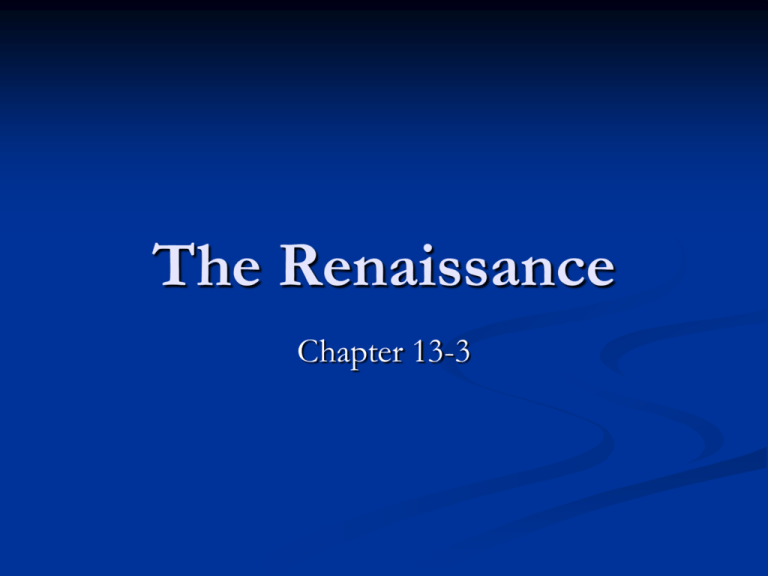Chapter 13 Part 3
advertisement

The Renaissance Chapter 13-3 Mannerism Michelangelo was the bridge between Italian Renaissance Art and Mannerism Belief that painting in the Renaissance style had reached perfection so… Exaggerated poses, elongated limbs, weird Tintoretto’s Baptism of Christ El Greco was the greatest Mannerist of all Unnatural pigments Elongated Limbs The Burial of Count Orgaz The Northern Renaissance The Northern Renaissance was More Religious More emotion in the art More detailed especially in the background More preoccupation with death The art in the North reflected Christian Humanism: How can the knowledge of human nature as revealed in the ancient texts be blended with Christian principles to create a better (more Christian) world? Flemish Style Van Eyck: Perfected oil painting Had much religious symbolism Arnolfini and his Wife Arnolfini and his Wife Netherlands Bosch: Symbolism, surreal, fantasy Death and the Miser Peter Bruegal the Elder Peasant Wedding Not much Renaissance influence Focused on lives of ordinary people Death and the Miser Peasant Wedding The Germans Durer: Master of the woodcut Was the first to bring Renaissance style to the North Hans Holbein the Younger: Portraits The Ambassadors Henry VIII Erasmus Durer’s Four Horsemen of the Apocalypse The Ambassadors Henry VIII Erasmus (Spain)El Greco’s The Holy Trinity The Fugger Family Like the Medici, they were bankers who patronized the arts in the North







